Back Jack Do It Again Havens
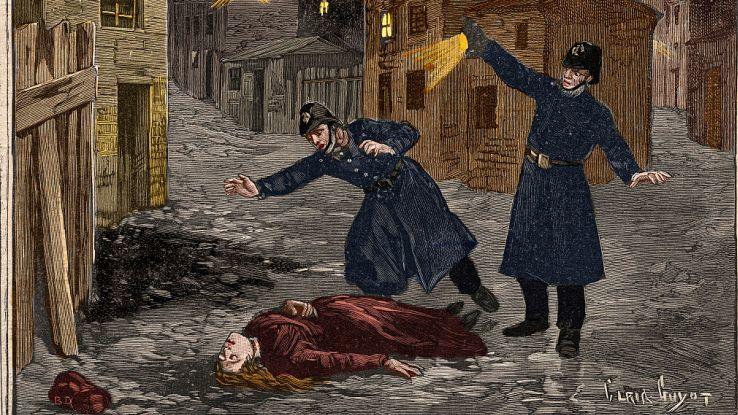
Who was Jack the Ripper? Police force and apprentice sleuths alike have tried for over a century to uncover the identity of the person responsible for the gruesome murders of Mary Ann Nichols, Annie Chapman, Elizabeth Pace, Catherine Eddowes and Mary Jane Kelly.
The victims' bodies were slashed and their organs were carefully removed. It was believed the person responsible had training as a doctor or a butcher. While the case remains unsolved, the post-obit individuals are some of the well-nigh likely suspects.
Famous Painter Walter Sickert
Could acclaimed British artist Walter Sickert exist Jack the Ripper? Sickert was a prominent painter whose work depicted ordinary people and everyday life. While never linked to the murders during his lifetime, Sickert's proper name was kickoff tied to the Ripper murders back in the 1970s.

Subsequently trying his hand at interim, Sickert went on to join the family tradition of art. But Sickert bankrupt from tradition past painting urban scenes rather than wealthy patrons' portraits. His piece of work showed the transition from Impressionism to Modernism.
Sickert Painted the Murder of a Prostitute
As a swain, Sickert studied under many influential artists, including Edgar Degas and James Abbott McNeill Whistler. Sickert's attraction to urban civilization was and so intense that he oftentimes lived and worked in some of London's grittier neighborhoods. Sickert's art often depicted dance hall girls and prostitutes.
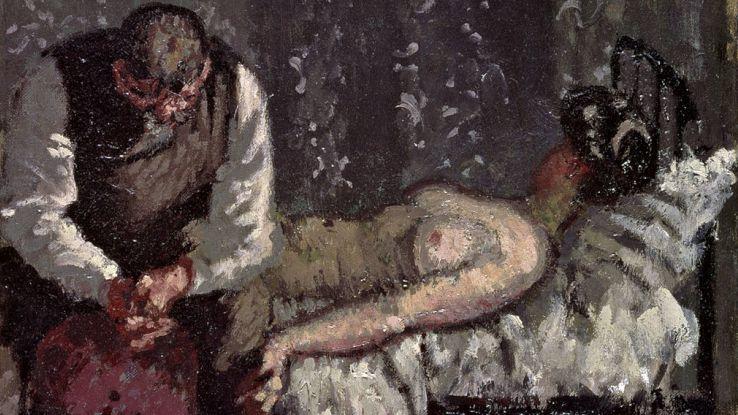
His art often had sexual themes that were considered vulgar and obscene. Information technology'southward believed that Sickert may have been a client of some of the women who modeled for him. In 1907, he painted "The Camden Town Murder," a scene based on the grisly murder of a London prostitute whose throat was slit by her husband.
Sickert Painted "Jack the Ripper's Sleeping room"
Sickert developed an interest in Jack the Ripper after his landlady told him she suspected her previous tenant was the murderer. Sickert's involvement soon turned into fascination. He eventually painted the night space and named the piece "Jack the Ripper's Bedroom."
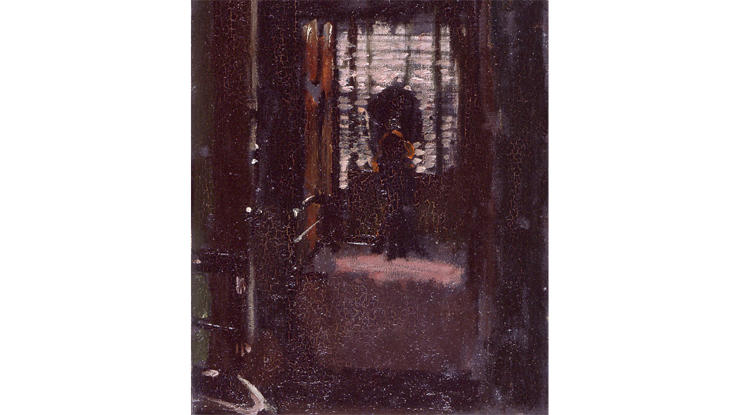
The work of art shows an ominous, shadowy room, every bit seen from the doorway, and leaves much to the imagination. The painting depicts a wooden chair and a dressing table and chair under a window with slightly opened blinds. The actual room was located at 6 Morning Crescent. The painting is on brandish at the Manchester Art Gallery.
Author Patricia Cornwell Believes Sickert Is the Leading Doubtable
Some researchers pegged Sickert either as Jack the Ripper or his accomplice. Only the theory that Sickert was the killer heated up in 2002 when best-selling law-breaking novelist Patricia Cornwell wrote "Portrait of a Killer: Jack the Ripper, Case Closed," a nonfiction volume in which she put along her theory that Sickert was the killer.

Cornwell contended that Sickert's paintings often portrayed themes of violence against women. She believes the motive for the murders was Sickert's alleged inability to have sexual practice due to a bungled surgery on his penis. According to critics, Cornwell provided fiddling evidence that Sickert ever had such a surgery.
Cornwell May Have Cut Upwards One of Sickert'southward Paintings for Proof
Cornwell was so convinced that Walter Sickert was Jack the Ripper that she purchased 31 of his paintings, some of his messages and his writing desk-bound in search of testify to back up her theory. According to Cornwell, her investigation cost near $7 1000000.
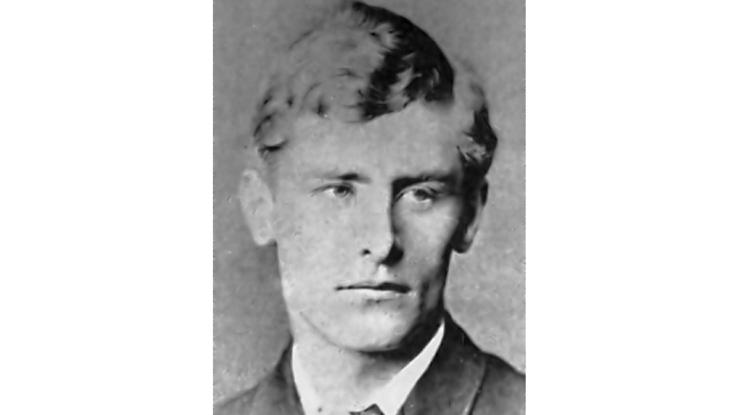
In 2001, The Guardian newspaper reported that Cornwell had cut up ane of Sickert's paintings to obtain DNA or any other boosted proof that the artist was truly the killer. The art world was shocked by Cornwell'southward beliefs and called it an human action of "monstrous stupidity." Withal, Cornwell has denied the accusation that whatever of Sickert's piece of work was damaged.
Polish Barber Aaron Kosminski
Polish barber Aaron Kosminski has been repeatedly named equally a viable Jack the Ripper suspect. After the pogroms forced many Eastern European Jews to flee their homes, Kosminski and his siblings immigrated to Britain from Poland. They ended up in the slums of Whitechapel, where Kosminski worked sporadically as a barber.
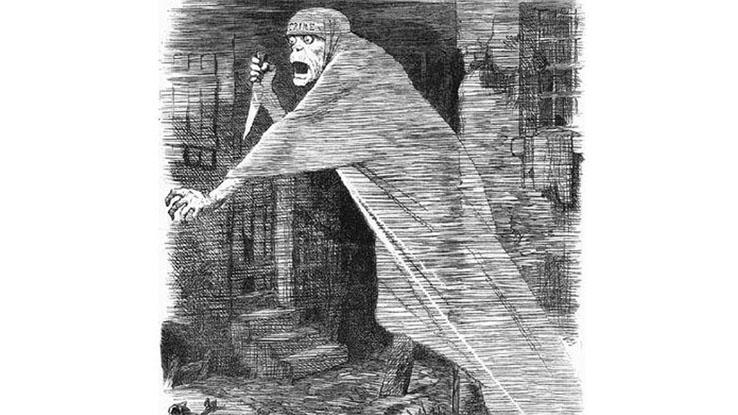
Banana Chief Lawman Sir Melville Macnaghten named Kosminski as a prime suspect. According to Macnaghten, Kosminski "had a keen hatred of women…with potent homicidal tendencies." Kosminski was admitted to the Leavesden Aviary in 1894, but at that place were never whatsoever reports of him showing violence during his residency at the facility.
Kosminski Was a Paranoid Schizophrenic
Kosminski was thought to take suffered from paranoid schizophrenia. His symptoms included auditory hallucinations and an intense fear of accepting nutrient from other people. Kosminski was so fearful of food that was offered to him that he preferred to eat morsels that had dropped on the ground.

Kosminski spent most of his developed life in and out of insane asylums and public workhouses. At one point, the mentally unstable man was committed later on threatening to kill his sister with a pocketknife. He died in 1919 at the age of 53. At the fourth dimension of his death, Kosminski weighed merely 93 pounds.
Ripper Victim Catherine Eddowes' Shawl Was Analyzed for DNA Prove
In 2007, author Russell Edwards purchased the stained shawl of Ripper victim Catherine Eddowes. It's believed law lawman Amos Simpson discovered the shawl when he arrived at the scene of the murder and kept it for unknown reasons. Hoping to solve the Ripper mystery, he gave it to Liverpool John Moores University biochemist Dr. Jari Louhelainen for DNA analysis.

In 2019, Louhelainen and reproduction expert David Miller submitted a paper to the Periodical of Forensic Sciences that claimed they were able to excerpt mitochondrial Dna from the shawl of Ripper victim Catherine Eddowes. DNA samples were likewise taken from Eddowes' and Kosminski'south descendants.
Could Eddowes' Shawl Agree Ripper Clues?
The tests run past the two researchers compared fragments of mitochondrial DNA, that portion of Dna inherited from a person'southward mother. According to the researchers, The Deoxyribonucleic acid was a positive match to the sample provided by the living relative of Kosminski, which concluded the study that appeared in the Journal of Forensic Sciences.

Louhelainen claimed he was able to excerpt mitochondrial DNA from the silk shawl that was allegedly constitute side by side to victim Catherine Eddowes. It was a 99.two% match with the female line of Kosminski's sisters. The Dna likewise showed that the sample came from someone with brown hair and brownish optics.
Skeptics Contend Louhelainen and Miller's Findings
Not anybody subscribes to the conclusions made in Louhelainen and Miller'south study. Some scientists believe key details of the Dna were omitted, making the data hard to verify. According to Louhelainen and Miller, the information was purposely omitted to protect the privacy of the Eddowes and Kosminski descendants.

Other Ripper researchers are highly hundred-to-one that Aaron Kosminski was responsible for whatever of the Whitechapel murders, citing that the immigrant preferred speaking in Yiddish. With such poor English skills, information technology was highly unlikely Kosminski would have been able to lure whatever of the women into dark alleyways.
Was Jack the Ripper an American Ripper?
Could Jack the Ripper take actually been an American Ripper? H.H. Holmes was a md who gained fame as America's first known serial killer. Born Herman Webster Mudgett, Holmes was a known con artist and bigamist. Like Jack the Ripper, he was cold and calculating and hands evaded detection.
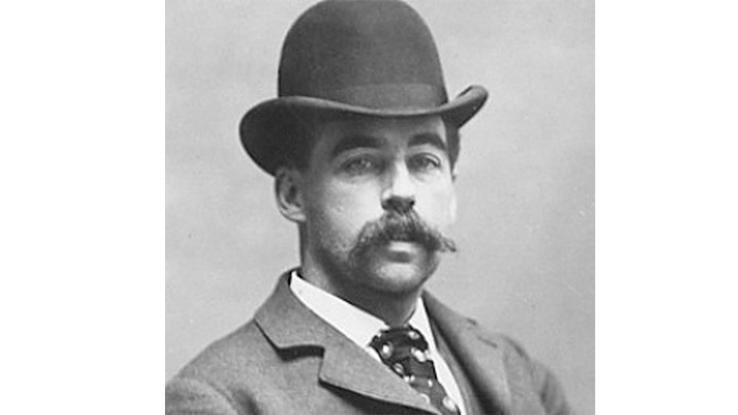
Chaser Jeff Mudgett believes that his great-peachy-grandfather H.H. Holmes and Jack the Ripper are the same. Mudgett says that information contained in two diaries he inherited from Holmes reveals how his reprehensible relative murdered London prostitutes. Transport passenger logs show that an H. Holmes traveled from London to the United States shortly after the murders stopped.
Holmes Said He'd Ever Been Fascinated With Death
Holmes was built-in in 1861 to an affluent New Hampshire family. He claimed that he was bullied every bit a child and that schoolmates locked him into a closet with a skeleton. Rather than feeling horror, Holmes said he developed a fascination with death.
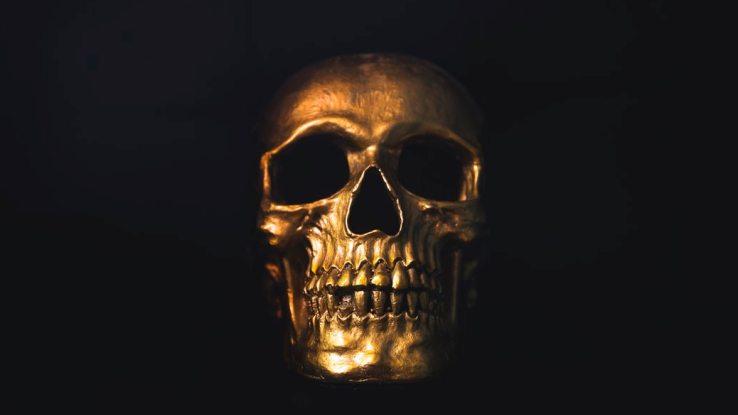
Mudgett married in 1878, and he and married woman Clara had a son in 1880. In 1884 he graduated from the University of Michigan's School of Medicine, where he'd worked with cadavers as an assistant in the anatomy lab as a medical educatee. Acquaintances recall Mudgett was abusive to Clara, who left him in 1884.
Holmes Built a "Murder Castle"
Post-obit his graduation, Mudgett changed his proper name and moved to Chicago afterwards he was involved in several scams and his proper noun was linked to the disappearance of a little boy. In 1886, Holmes set shop in Chicago as a pharmacist and began murdering people in order to steal their holding.
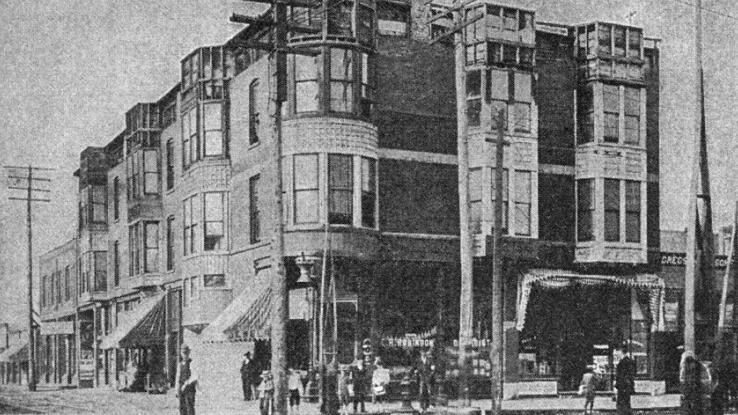
Holmes carried out the murders in a edifice he claimed would serve equally a hotel for visitors attention the Globe's Columbian Exposition. But the building was actually designed for torture, executions and body disposals. After his arrest, investigators discovered hidden passageways and rooms constructed with trap doors. The grisly revelation resulted in the building existence nicknamed the "Murder Castle."
"I Was Born With the Devil in Me"
Holmes was eventually arrested, tried and convicted for the murder of his friend, Benjamin Pitezel. Pitezel had helped Holmes scam insurance companies, but he and his children were murdered when Holmes idea their deaths might bring in some money.
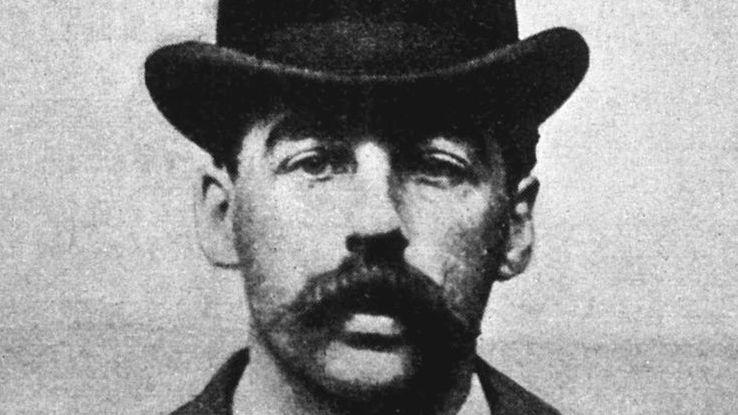
Holmes initially confessed to 27 murders, but the number eventually rose to 130 and could be as loftier as 200. Holmes began making numerous confessions, but it was difficult for investigators to decide truth and fiction. In prison, Holmes wrote, "I was born with the devil in me." He besides claimed that his appearance while in prison house was outset to look similar that of Satan.
Mudgett Insists Holmes Is Linked to the Ripper Murders
Holmes was hanged on May seven, 1896. Jeff Mudgett believes a lookalike was tricked into taking Holmes' place in prison. Although Holmes' body was discovered in a Pennsylvania grave, and DNA has conclusively proven his identity, Mudgett insists Holmes is linked to the Jack the Ripper murders.
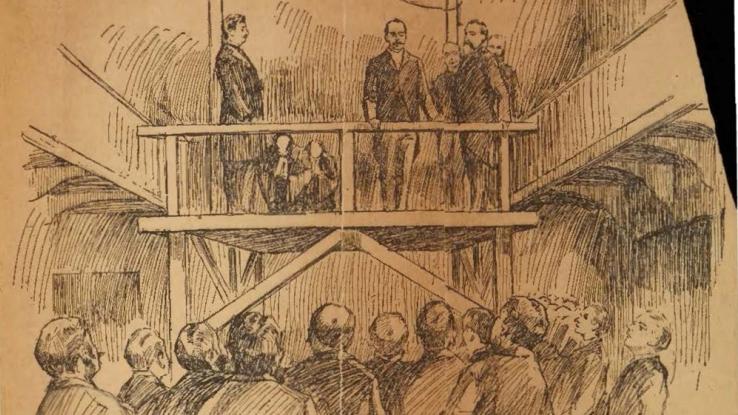
In an NBC 5 Chicago interview, Mudgett maintained that his relative is withal a feasible suspect, stating, "At that place are too many coincidences for this to be another artificial theory. I know that the evidence is out at that place to show my theory and I'yard not going to give up until I find information technology."
Was the Lambeth Poisoner the True Ripper?
Thomas Neill Cream was a Scottish-Canadian md-turned-serial killer who was known in the press as the "Lambeth Poisoner." Born in Scotland and raised near Quebec City, Cream received his medical degree from McGill Academy and did post-graduate training at St. Thomas' Hospital Medical Schoolhouse in London. His affinity for killing prostitutes made him a likely doubtable.
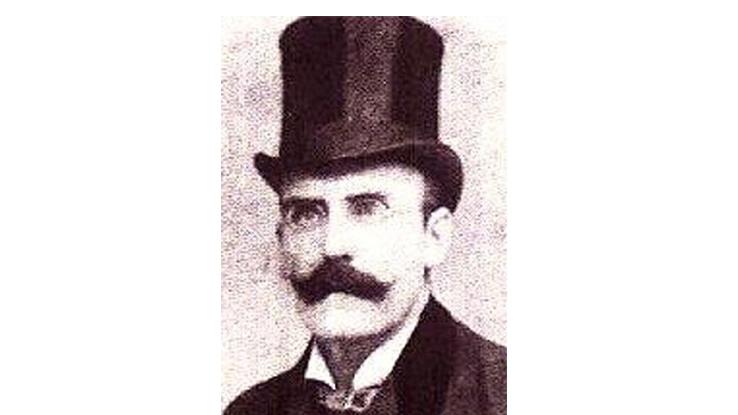
Cream had a shady past. In 1876, Cream had a human relationship with a immature lady named Flora Brooks that resulted in an unexpected pregnancy. Cream almost killed Brooks when he attempted to abort the baby. At the insistence of her male parent, Cream married Brooks, and and so he set off to England.
Cream Escaped Two Murder Convictions
Due to multiple run-ins with the law, Cream moved between Canada, the United States and England, typically setting up shop as an abortionist in seedy areas. After his return to Canada, the torso of chambermaid Kate Gardener was found in Cream's office. Lying next to the trunk was a bottle of chloroform. Despite the unusual circumstances and Cream'southward nefarious background, Foam was non charged with murder.
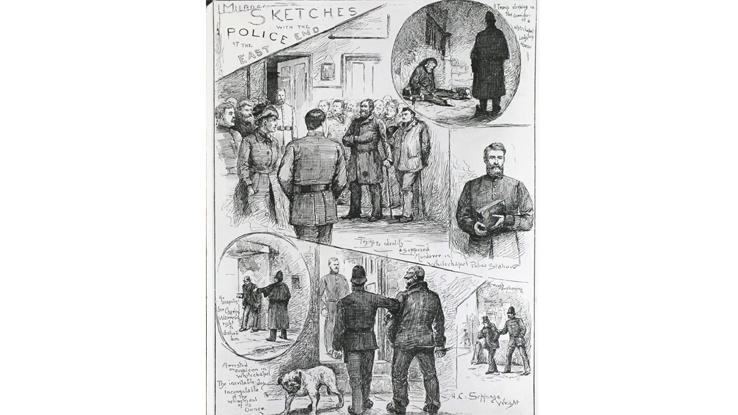
After Gardener's death, Cream headed off to Chicago. In Baronial of 1880, a woman by the proper name of Julia Faulkner, who'd been associated with Foam, also died under unexplained circumstances. Cream was arrested but escaped formal charges.
Cream Begins Selling Poisonous Potions
In 1891, Cream began selling strychnine "medicines" to prostitutes, claiming they prevented crabs diseases and cured epilepsy. Cream too added strychnine to a potion that killed Daniel Stott, a patient who learned Cream was having an affair with his married woman. Investigators discovered Stott had been poisoned and sent Foam off to the Illinois Land Penitentiary.
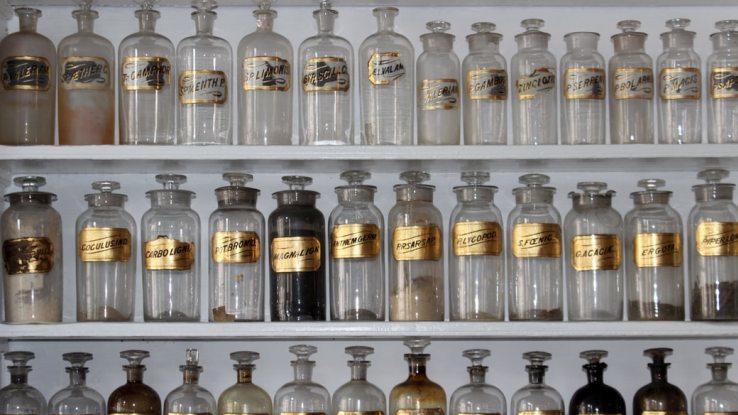
Foam was sentenced to life in prison but was released for expert behavior in 1891. He traveled to Canada, then ready off for England. Within days, prostitutes Ellen "Nellie" Donworth, 18, and Matilda Clover, 27, died afterwards consuming Cream's concoctions. Foam also killed prostitutes Alice Marsh, 21, and Emma Shrivell, 18, afterwards lacing their drinks with strychnine.
Cream Attempted to Extort Money Later on the Murders
In addition to working as an abortionist and poisoner, Foam also became an accomplished extortionist. When a prostitute died, Cream would then accuse a prominent human being of the murders and attempt blackmail. Foam tried to blackmail his neighbour, Joseph Harper, claiming he had bear witness that the man had killed Marsh and Shrivell. He told Harper that a sum of £1,500 could make the unfortunate accusation go away.
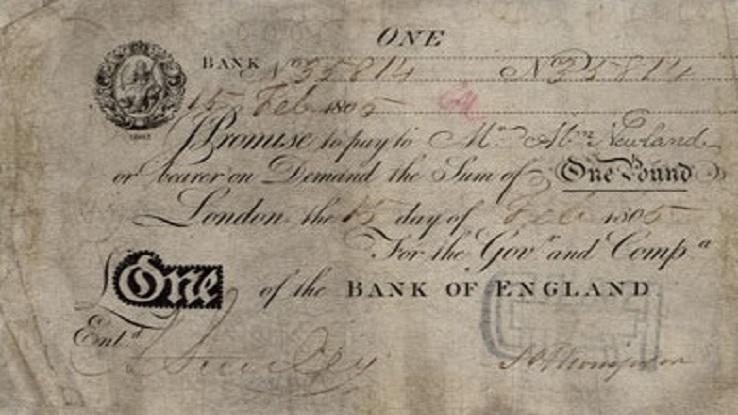
Harper refused to cave to Foam's demands. The police were eventually able to tie the doctor to the murders when Scotland Grand surveilled Cream and learned that he often met with prostitutes.
Foam's Penalty
Cream was convicted of murdering Matilda Clover and hanged in 1892 at the age of 42. According to executioner James Billington, Cream'due south last words on the scaffold before his death were "I am Jack the…." Billington reported that this was Foam'southward confession, revealing his identity as Jack the Ripper.
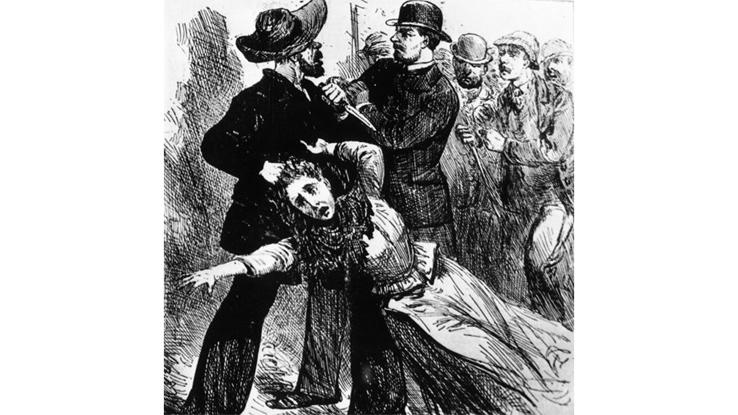
While records prove Foam had been in prison house during the Ripper murders, some researchers speculate that the prison where he was held was then decadent that he may accept bribed prison officials in gild to gain an early release and that the residue of his term was served by a lookalike.
Was the Ripper a Regal?
One of the most sensational suspects is Queen Victoria'southward grandson, Prince Albert Victor. Known fondly as "Eddy," the prince was the son of Prince Edward and Princess Alexandra. When his father became male monarch, Albert Victor became second in line to the British throne. Only the prince never had the take chances to get king, dying at the historic period of 28 from influenza during the 1891 pandemic.
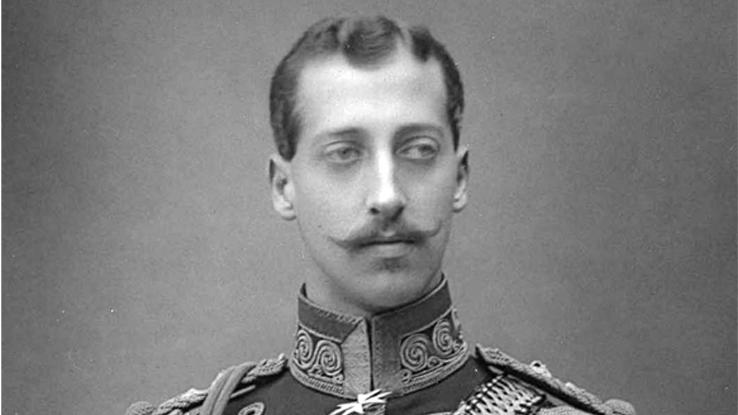
During his brief life, Albert Victor's sexuality and mental health were subjects of great speculation. He was rumored to accept been associated with a homosexual brothel. The rumors and scandal were a constant source of embarrassment to the prince and regal family unit.
Prince Albert Victor
In 1970, British physician Thomas Stowell wrote an article that accused the prince of being the infamous murderer. Co-ordinate to Stowell, the prince's Jack the Ripper alter ego committed the murders during bouts of temporary insanity caused by an avant-garde example of syphilis.
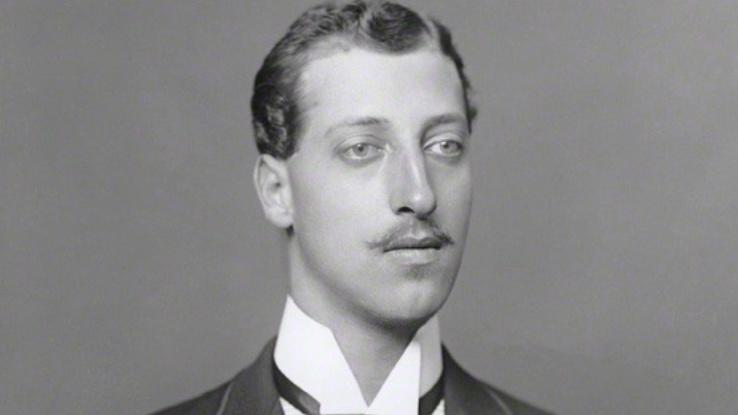
Stowell claims he developed his theory after seeing the private papers of royal physician Sir William Gull. In his writings, Gull referred to the Ripper only as "S" but also described him as being a gentleman of "collars and cuffs," a nickname for the well-dressed prince, who often wore starched collars to hibernate his unusually long neck.
Were the Murders an Deed of Revenge?
Ripperologists who concur with Stowell believe the prince may have been exacting revenge on prostitutes. Rumors swirled that he'd contracted syphilis from an illicit encounter while at sea with the Regal Navy in the Caribbean. However, the stories of his illness have never been verified.
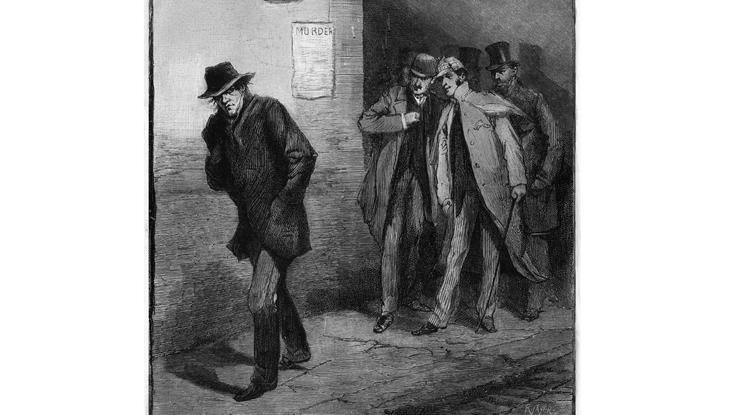
"The killer was a gentleman who had contracted syphilis in his youth, and at present in the terminal stages of the illness suffered delusions," writes author Christopher J. Morley. "He became sadistically aroused when watching deer being dressed, and when his warped sexual passion exploded committed the murders. He was assisted past the authorities who helped to muffle information technology from the public."
Did the Royal Family Hide Albert Victor's Violence?
Stowell declared that after the second Whitechapel murder, the majestic family was sure that Eddy was actually Jack the Ripper, but they needed to go on his violence and illness a secret. Stowell claims that his tearing behavior was concealed from the public when the royal family had him committed to a private mental infirmary in Sandringham.
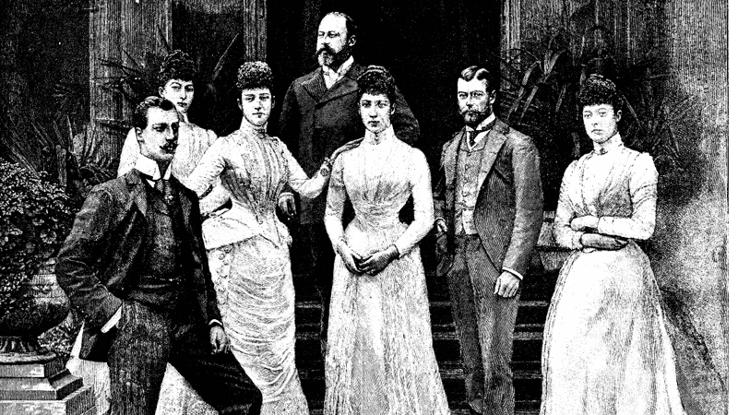
Stowell asserts that Eddy's true cause of decease was from syphilis and not a flu as the family unit had claimed. Stowell as well states that when the family realized Albert Victor was not a suitable candidate for king, the prince was poisoned after beingness given a fatal dose of morphine.
Did the Murders Comprehend Upwards a Royal Hush-hush?
A second theory hypothesized that the murders covered up a secret union between the prince and a local woman. In the volume "Prince Jack" by Frederick Spiering, the prince had fallen in love with a commoner by the name of Elizabeth Crook, and the two married and had a child. In addition to her lowly station in life, Crook was also a Catholic.
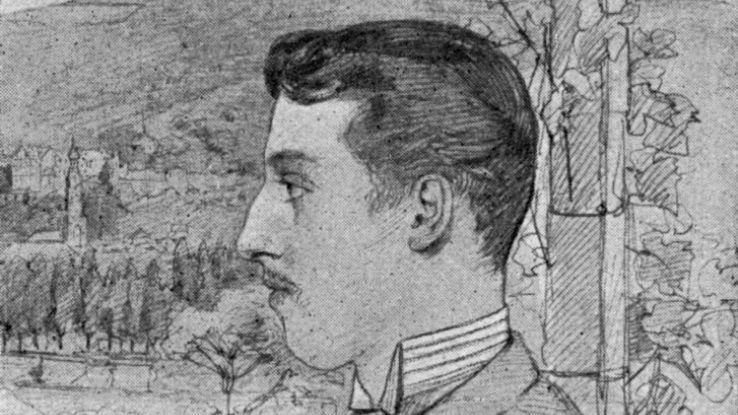
Their spousal relationship would have been considered a family disgrace. According to Spiering, the majestic family plotted to murder anyone with knowledge of the relationship. While the theory of the Prince as Ripper is intriguing, in that location's cypher more than coexisting prove linking the prince to the murders.
Was Jack the Ripper a Adult female?
Could Jack the Ripper have been Jill the Ripper? Some Ripperologists adult the theory afterwards a murder in 1890 was committed by a woman named Mary Pearcey. Pearcey invited friend Phoebe Hogg to visit her home and brutally murdered Hogg and her infant. It's believed Pearcey was having an affair with Hogg's hubby when she decided to murder the adult female and child.

On October 24, 1890, Pearcey's neighbors heard screams coming from her domicile. That evening, Hogg'southward horribly mutilated trunk was discovered. A bloodsoaked baby wagon was constitute about a mile away, with Hogg's infant Tiggy nearby. Witnesses said they had seen Pearcey pushing the buggy.
Pearcey Seemed Unconcerned When Law Searched Her Blood-spattered Home
Like Jack the Ripper'due south victims, police discovered the bodies of Hogg and her baby had been savagely attacked and dumped. When investigators went to question Pearcey, they found her home was spattered with blood. Upon asking for an explanation, Pearcey replied, "Killing mice, killing mice, killing mice."
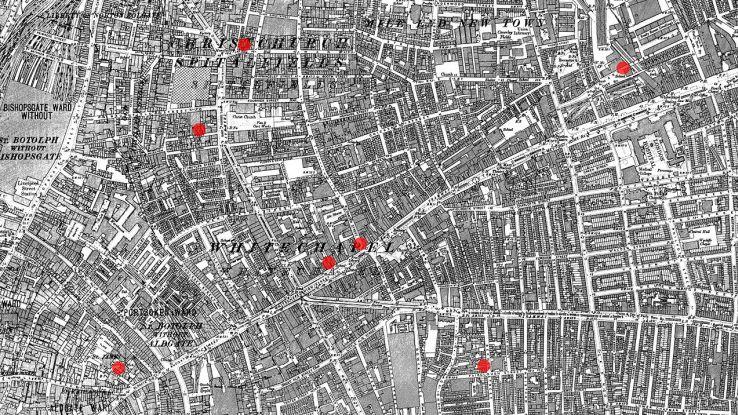
When government searched her domicile they found bloodstains in the kitchen, along with a bloodstained poker and a etching pocketknife. At that place were too ii broken windows in the kitchen, indicating signs of a struggle. When Pearcey was arrested, law institute claret on her clothing, and she was wearing Hogg'due south wedding ring.
The Pearcey Murders Had Similarities to the Ripper Killings
According to some Ripperologists, Hogg's roughshod murder shared similarities with the horrific Whitechapel killings. Phoebe Hogg and the Whitechapel prostitutes died from slashes to the throat, and all had their bodies dumped in public places.
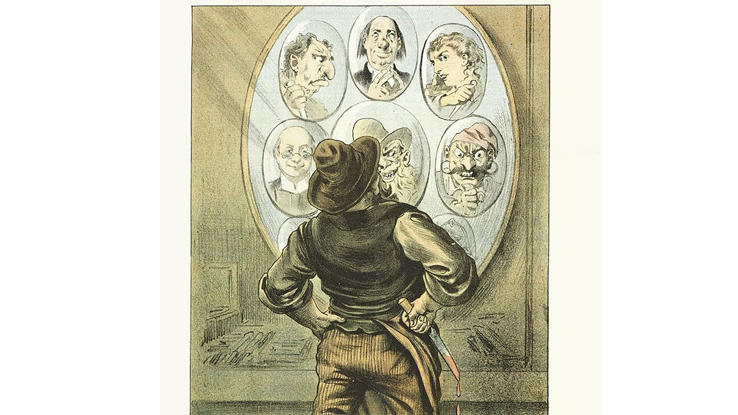
Pearcey was hanged in 1890. Ripper investigator Sir Melville Macnaghten witnessed Pearcey's execution and wrote, "I have never seen a woman of stronger physique… Her nerves were as fe cast as her body." Executioner James Drupe gave a similar account of Pearcey's demeanor. Prior to her death, Pearcey placed a ambiguous ad that read, "mecp terminal wish of mew, have not betrayed mew," merely refused to reveal its meaning.
Pearcey Never Confessed to Whatever Crimes
According to those present at her execution, Pearcey'due south concluding words were, "My judgement is a only ane, but a good bargain of the evidence against me was fake." Pearcey was and then infamous that Madame Tussaud's Wax Museum created a likeness of her that attracted xxx,000 curious visitors. The noose used to hang Pearcey can be found at the Blackness Museum of Scotland K.
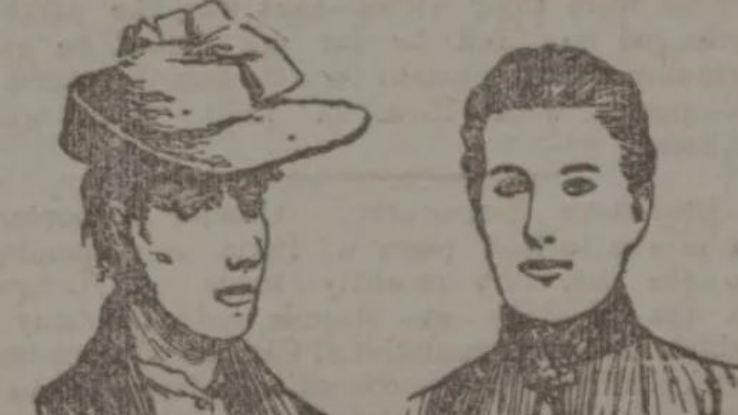
Present-day Jack the Ripper scholars believe Pearcey may take suffered from a personality disorder exacerbated by alcoholism and depression. Pearcey's attorney attempted to show that she was mentally ill. However, an examination past 3 doctors failed to find whatsoever medical issues.
"Jill the Ripper" Could Have Been a Midwife…or a Human
Later Pearcey's trial, some investigators theorized that Jack the Ripper may accept been a man dressed as a woman. At the time of the murders, it was common for midwives to deliver babies and sometimes perform abortions. Their blood-stained vesture typically went unnoticed by area residents.
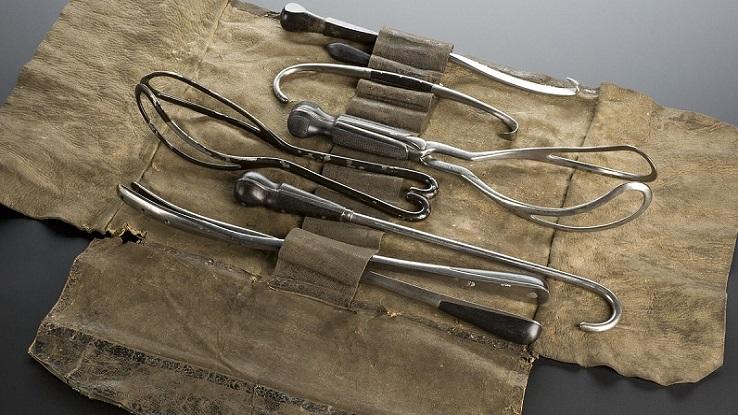
An impostor dressed as a woman walking late at nighttime would likely be ignored. Writer Sir Arthur Conan Doyle subscribed to this theory. Another theory involved a "mad midwife" who was either disgruntled or deranged. Similar doctors, midwives were too familiar with the female anatomy and even knew about certain pressure points that could return a adult female unconscious.
Source: https://www.faqtoids.com/knowledge/jack-the-ripper-suspects?utm_content=params%3Ao%3D740006%26ad%3DdirN%26qo%3DserpIndex
0 Response to "Back Jack Do It Again Havens"
Post a Comment